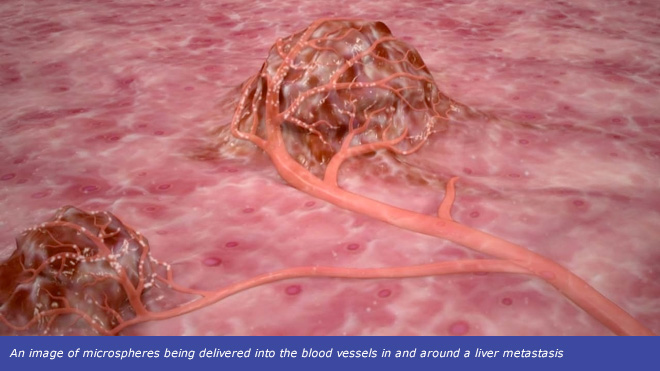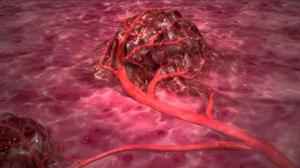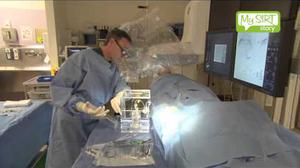
Selective Internal Radiation Therapy (SIRT)
SIRT (also known as radio-embolisation) is a special type of internal radiotherapy that targets liver tumours inside the body with high doses of radiation.
It involves injecting millions of tiny radioactive ‘beads’ called microspheres into the main blood vessel of the liver through a long thin tube (catheter). The microspheres are smaller than the width of a human hair and can only be seen under a microscope.
The microspheres travel to the liver where they lodge themselves in the very small blood vessels in and around the liver tumours where they give off high doses of radiation. As the microspheres only give off radiation to a small area they target the liver tumour while doing little damage to the surrounding healthy liver tissue. The action of the radiation destroys the liver tumour cells causing the tumours to shrink. The radiation has a useful effect on the tumour for about two weeks.

A dose of treatment will be used that is effective against the tumour but causes minimal or no damage to the normal liver tissue. Although after two weeks, only three per cent of the initial useful radiation remains and after one month it has all gone, the effects of the radiotherapy on the cancer last much longer than this. The microspheres stay in the liver permanently but they are harmless.
Benefits of SIRT:
- Targets liver tumours directly with radiation while minimising damage to the surrounding healthy liver
- Delivers much higher doses of radiation over much longer periods of time than would be possible with external beam radiation
- Delivers a radiation dose that is well below the limit the healthy liver tissue can tolerate without serious damage
Find out what cancers can be treated with SIRT
Find out about the side effects of SIRT

There are three ways in which you can get SIRT treatment:





























